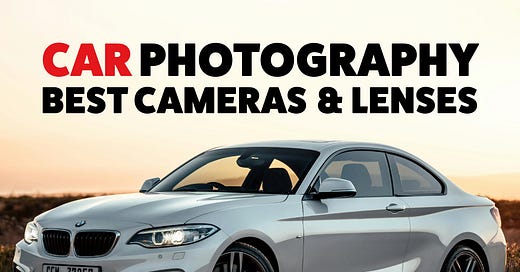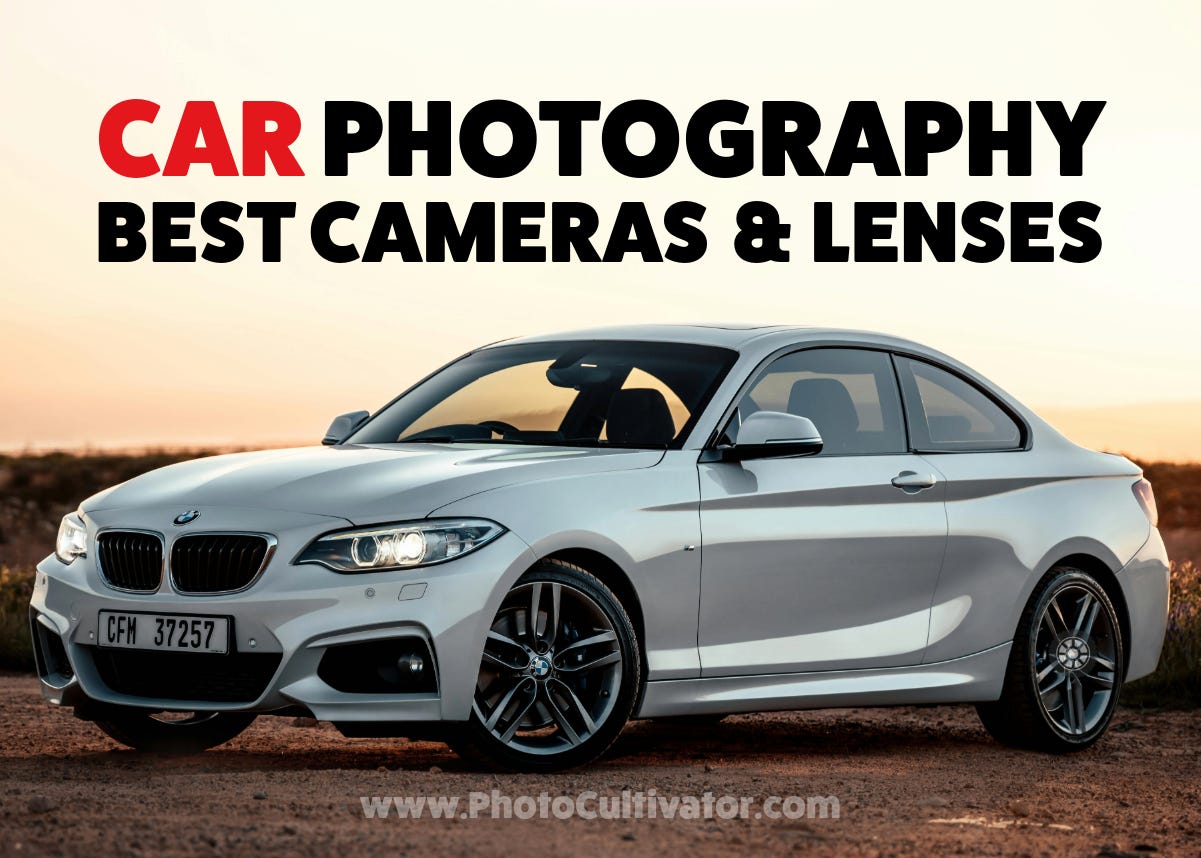Mastering Car Photography: The Best Cameras and Lenses
Having the right gear is key to beautiful car photography.
Here’s my complete guide for both beginner and professional car photographers, as well as car fans, on the best cameras and lenses for car photography:
Understanding the Basics of Car Photography
Car photography needs lots of detail, clarity, and precision.
When choosing a camera for car photography, consider things like resolution, how well it works in low light, fast autofocus, lens options, continuous shooting/burst mode, and 4K video or higher.
Best Cameras for Car Photography
Best Overall Camera
Panasonic Lumix GH5 - Offers a high megapixel count, excellent low-light performance, and fast autofocus.
Best Camera for Low Light
Sony A7R IV - Known for its excellent low-light performance, making it perfect for capturing car photos during the golden hour or at night.
Best Camera for Action Shots
Fujifilm X-T4 - Has high-performing autofocus and fast shutter speeds, great for photographing moving cars.
Other Great Options
Fujifilm GFX 100S - A medium format camera with a huge 102MP sensor, giving incredible detail and image quality for still car shots.
Sony A1 - A very versatile camera with 50MP resolution, fast 30fps burst shooting, and excellent autofocus, able to handle both still and action car photography.
Nikon Z7 II - A high-resolution full-frame mirrorless camera with good image stabilization and low light abilities, well-suited for car photography.
Recommended Camera & Lens Kit for Car Photography
For those looking to invest in a high-quality camera setup specifically tailored for car photography, here is a recommended kit that covers both still photography and video needs:
Camera Body
Sony a7 IV Mirrorless Camera ($2,498)
33MP full-frame sensor for detailed photos
4K 60p video with advanced autofocus tracking
5-axis in-body image stabilization
Vari-angle touchscreen for flexible shooting
Lenses
Sony FE 70-200mm f/2.8 GM OSS Lens ($2,798)
Versatile telephoto zoom range for car details and motorsports
Bright f/2.8 aperture for shallow depth of field
Optical stabilization works with camera's IBIS
Tack sharp optics and beautiful bokeh
Sony ECM-B1M Shotgun Mic ($348)
Compact mic mounts directly on camera's hot shoe
Captures clear audio with reduced noise/wind interference
Ideal for recording engine sounds and ambient audio
This professional-grade mirrorless setup from Sony provides the resolution, autofocus capabilities, stabilization, and video features needed to capture stunning stills and video of cars in any environment.
The 70-200mm f/2.8 telephoto zoom is extremely versatile for isolating details, panning shots, and working from distances like at race tracks.
Best Lenses for Car Photography
Wide-angle Lens
Nikon AF-S 14-24mm f/2.8D - Captures the whole car in the frame and emphasizes the car's sleek curves and lines.
Other recommended models:
Telephoto Lens
Canon EF 70-200mm f/2.8L IS II USM - Great for capturing details and close-ups of car features.
Other models:
Macro Lens
Sigma 150mm f/2.8 EX DG OS HSM - Perfect for capturing the small details of car interiors and engines.
Others:
General Tips for Car Photography
Research the car first to understand its unique features and design so you can highlight them.
Use a powerful mirrorless or DSLR camera with fast autofocus and high continuous shooting.
Shoot during the golden hour for softer, more flattering light. Avoid harsh midday light.
Choose shoot locations that complement the car and create an appealing background.
Get low to capture the car at eye level for a more natural, less toy-like look.
Clean and wax the car to make it look its best.
Use lenses between 35-200mm focal length to avoid distortion.
Shoot from different angles, both high and low, for more dynamic compositions.
Capture both full car shots and close-up details.
Use accessories like reflectors and polarizers to control glare and reflections.
Get creative with backgrounds and settings to complement the car.
7 Tips For Shooting Cars In Motion
Get a driver and ride in the passenger seat of a car to photograph the other car in motion:
Have the two cars match speeds, with your car slightly ahead and in the adjacent lane.
Aim for a speed of around 60 km/h (37 mph) to get nice movement on the road and wheels.
Set your camera to continuous shooting mode and use a shutter speed around 1/100s.
A little blur can help communicate the sense of movement.
Use panning techniques to capture sharp, motion-blurred backgrounds:
Keep your camera focused on the moving car and pan smoothly to match its speed
Experiment with different shutter speeds, starting around 1/100s, to find the right amount of blur
Secure your camera to the inside of the car or your body using a strap to avoid camera shake.
Shoot on low-traffic roads to avoid distracting or frustrating other drivers3
Be prepared to take many shots, as you'll have a lot of failed images when shooting fast-moving cars.
Use a telephoto lens like a 70-200mm to capture the action from a distance at a racetrack or other venue.
Maintain a fast shutter speed, ideally f/2.8 or wider, to freeze the motion and reduce blur.
And That’s It
Car photography takes the right gear and knowledge.
Investing in quality equipment and applying these tips will help you take amazing car photos.
I hope that helps.
-Hakan
Additional Resources
Car Photography Tutorial from PRO EDU
5 Pro Tips to Enhance Your Car Photography from CAT Driver Training
10 Tips for Shooting Professional Car Photography - Visual Education
Nicholas Goodden’s Tips for car photography





